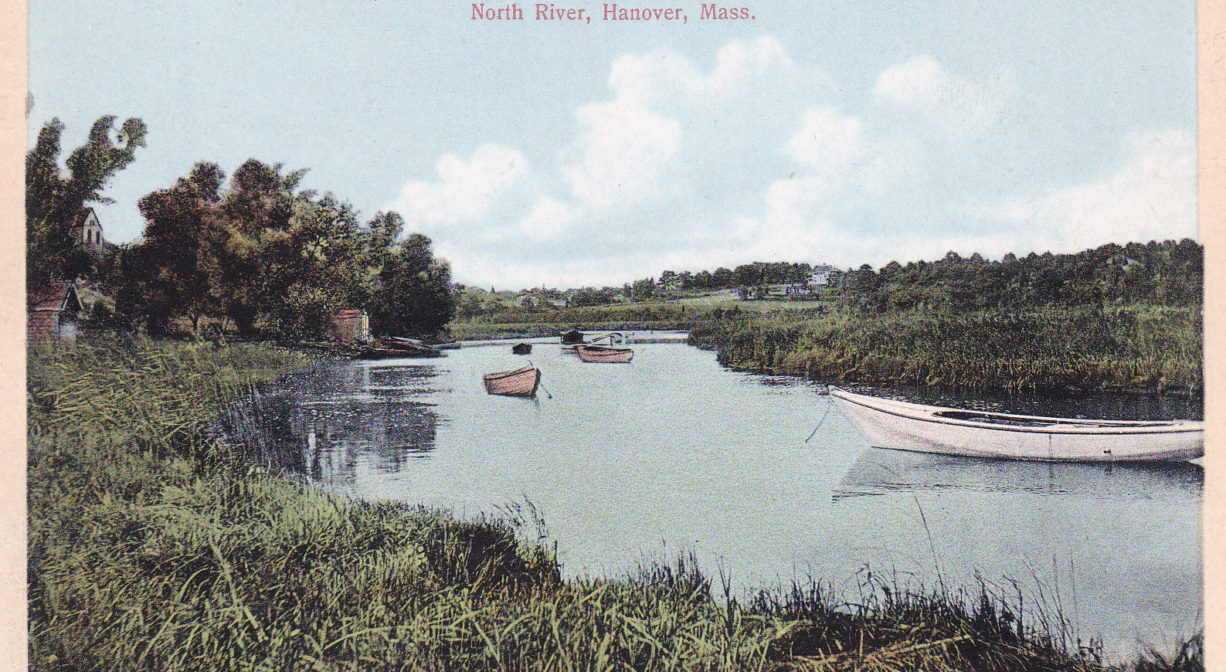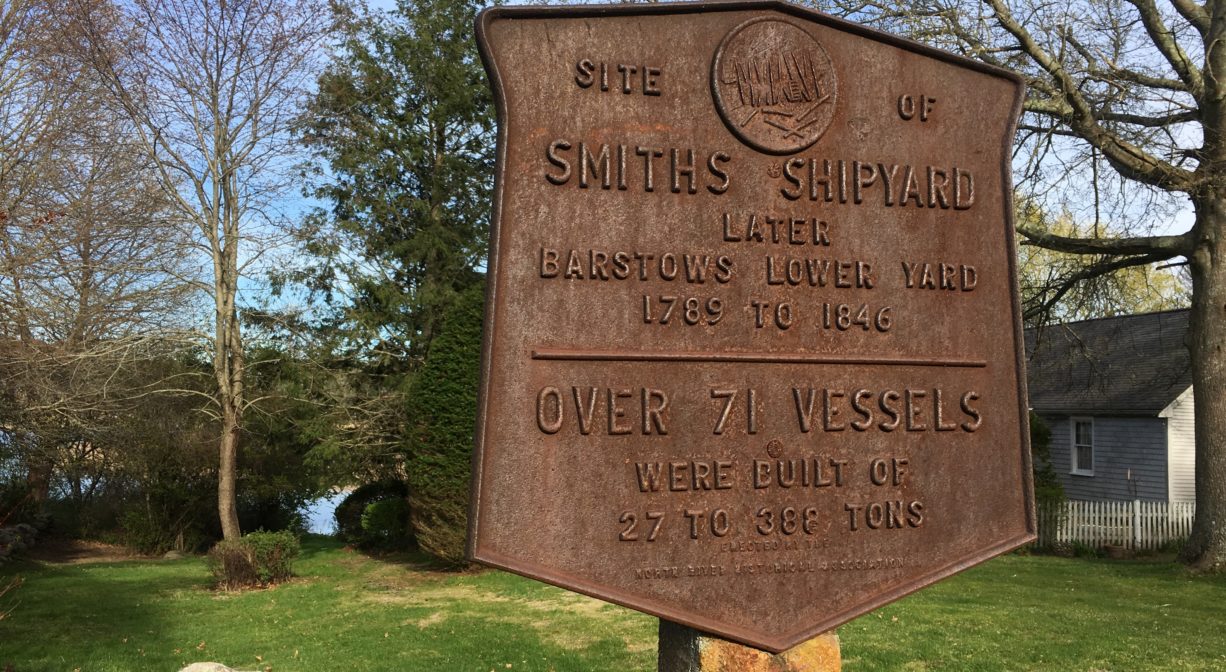Owned By: Private
The Hanover Yards are two historic North River shipyard sites near the Washington Street Bridge. Looking downstream from the bridge during the peak years of North River shipbuilding, one could see 11 shipyards, with vessels in various stages of construction. From 1800 to 1808, a work force of 400 ship carpenters constructed at least ten ships per year.
Two plaques mark these historical sites. One, commemorating the Smith Yards and Barstow’s Lower Yard, stands on private property in the cul de sac at the end of Old Shipyard Lane in Hanover. The other is closer to, but not directly visible from, the river on the same property. There are plans to move the second sign, which commemorates Barstow’s Two Oaks Shipyard, to a more visible location. Please respect private property and view only from a distance.
Features
The following passage is from Barry’s Historical Sketch of the Town of Hanover. “The scene of North River was one of animation and industry. Every morning the carpenters might be seen, crossing the pastures or walking along the river bank, or over the tiny Rainbow Bridge to the place of their daily toil.” . . . “The pastures too were strewed with timber, and teams of ‘fat oxen’ daily brought in, from the forests around, their loads of white oak, beech, hackmatack, maple, pine and other timber.”
These shipyards were active from 1668 to 1844. Few records exist. They included Clark Yard (1736), Kingman Yard (1800), and Wing Yard (1801), as well as one operated by Isaac Perry. The Smith Yard (later run by Eells) was another, producing numerous brigantines, schooners, and ships between 1797 and 1815.
The Barstow family operated two shipyards in this area — Two Oaks and Barstow Lower Yards — between 1760 and 1846. The elder Barstow (Thomas), along with Robert Eells, specialized in smaller ships, which were ideally suited for trade routes to the West Indies. They would bring beef, pork, fish and oil south, and return with rice, pitch, spices, rum, sugar, and logwood. The sons of Thomas Barstow continued the shipbuilding business here, specializing in larger craft common to the whaling industry.
Part of the reason this was such a popular location for shipyards was its proximity to the road from Boston to Plymouth. Supplies could be most easily transported to the site by wagon.
The local shipbuilding industry sometimes employed slave labor. Both Boston and Newport were slave trading hubs, and some of the ships built on the North River were use in the slave trade.
This land is within the region of the Massachusett (or Massachuseuk). To learn more about local Native American tribes, we encourage you to interact with their members. The Massachusett tribe at Ponkapoag and the Mattakeeset band of the Massachusett share information on their websites.
Habitats and Wildlife
There were 24 shipyards along the North River. Together they produced over 1,000 ships. All of those vessels were built with lumber culled from the surrounding forests. By the middle of the nineteenth century, few large trees remained. After the decline of the shipbuilding industry, the forests began to regenerate. Now, thanks in large part to conservation efforts, those forests have grown, providing essential wildlife habitat in the river corridor.
This property is located directly on the North River. The North River rises from marshes and springs in Weymouth, Rockland and Hanson. It is approximately 10 miles in length, with its source at the confluence of the Indian Head River (Hanover) and Herring Brook (Pembroke). From there it flows through the towns of Hanover, Pembroke, Marshfield, Norwell, and Scituate to the Atlantic Ocean between Third and Fourth Cliffs, draining approximately 59,000 acres along the way.
Historic Site: Yes
Park: No
Beach: No
Boat Launch: No
Lifeguards: No
Hours: Dawn to Dusk
Parking: No public parking.
Cost: Free
Dogs: No
Boat Ramp: No
ADA Access: No
Scenic Views: No
Waterbody/Watershed: North River/North River watershed





